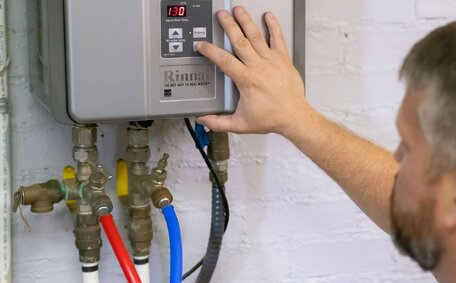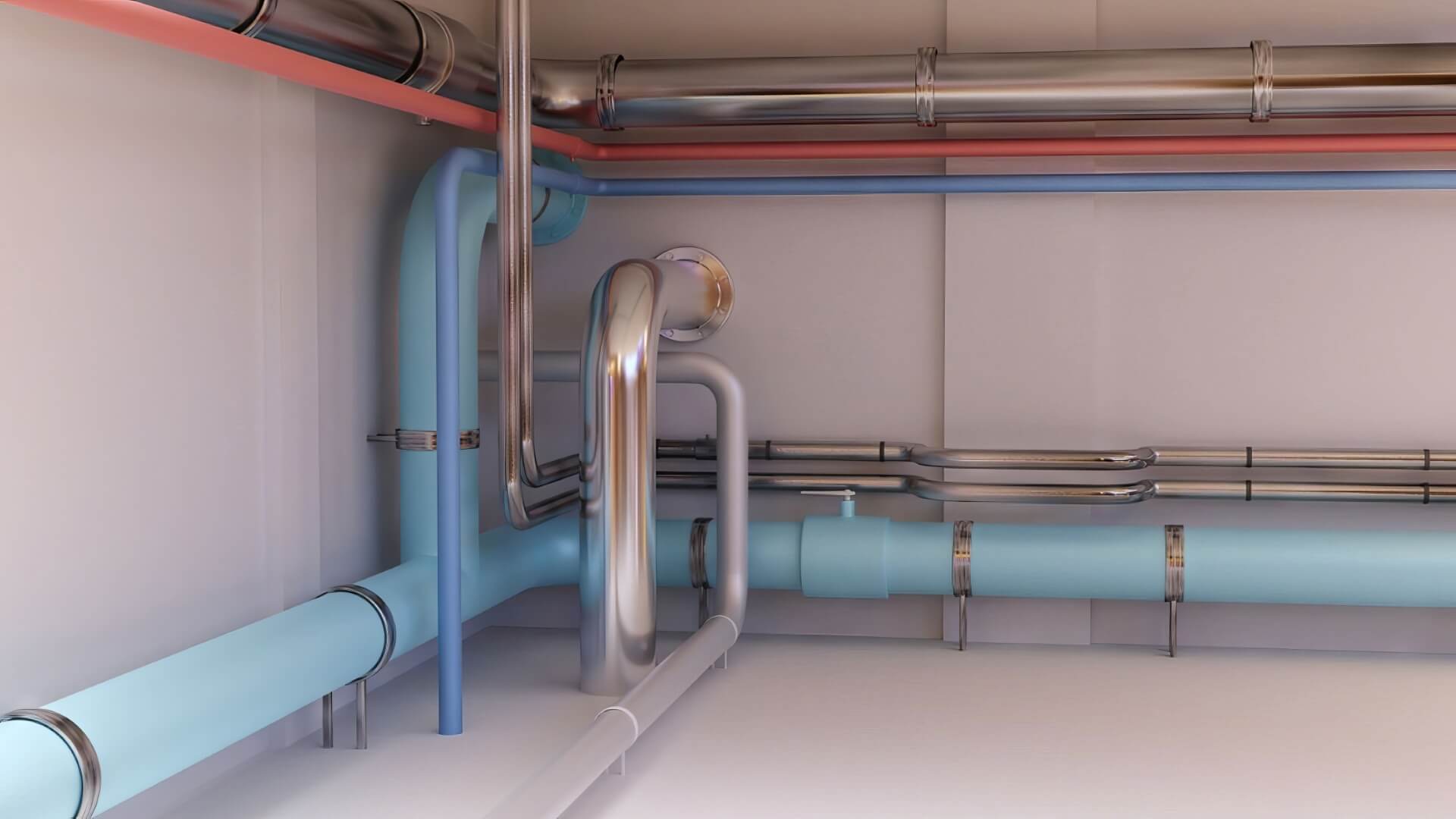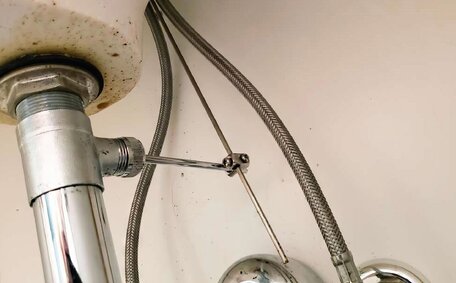Common signs of a faulty gas regulator
Several indicators can point to a malfunctioning gas regulator:
- Weak flames - If burner flames are low or only light on one side, the regulator may not be providing consistent flow when propane is being used.
- An odour of gas despite appliances being turned off often indicates a possible leak beyond the regulator.
- Frost on the regulator or supply lines can imply a gas leak due to rapid expansion.
- Unusual sounds like hissing, whistling, or popping from the bypass valve may signal the need to reset the regulator.
- If your grill lights up slowly or burners ignite partially with accompanying popping noises, the gas flow may be disrupted by the regulator.
- Discoloured flames - yellow orange flames, or overly blue flames instead of blue with yellow tips across all burners could indicate a faulty regulator.
If you observe these symptoms, immediately turn off the propane supply and consult a professional to inspect the regulator and entire gas system.
Yellow or orange flames
Blue flames normally signify effective combustion and indicate the gas system, including the tank valve, is functioning correctly. In contrast, yellow or orange flames instead of blue suggest that the gas regulator may require replacement.
Reasons for yellow/orange flames might include issues with the regulator or gas cylinder:
- A regulator’s inability to mix gases properly could result from inadequate inlet pressure, leading to incomplete combustion.
- Damaged components - Damage inside the regulator can interfere with gas flows, giving rise to an incorrect gas-air mixture.
- Clogged openings - Blockages on burner ports or regulator vents which can prevent correct mixes.
- Excessive gas flow, where high pressure overruns the air supply, can cause uncharacteristic flame patterns.
Yellow or orange flames often raise red flags about a malfunctioning automatic changeover in a gas regulator:
- Carbon monoxide, a hazardous gas emitted from incomplete combustion in devices like stoves or heaters, can signify regulator issues.
- Inefficiency - Wasted gas due to suboptimal combustion results in increased costs.
- Heat output - Lack of blue flames reduces the performance your heating.
- Damage to equipment - Excessive gas or carbon deposits can gradually harm appliances, such as grills.
Soot buildup on burners
Soot buildup on gas burner ports or pilot lights is one of the signs faulty propane regulators may exhibit. This black, powdery deposit indicates improper gas combustion.
Reasons soot can build up when the regulator malfunctions:
- Low oxygen - Insufficient air mixes into gas due to low pressure, resulting in incomplete burning.
- Impurities - Contaminants in faulty regulators pass through to burners.
- Flame disruption - Inconsistent flames produce excess soot.
Risks of soot buildup can indicate faulty regulator, necessitating a regulator inspection or replacement:
- Inefficient heating - Soot insulates burner surfaces, reducing heat transfer.
- Clogged components - Buildup blocks burner ports and pilot assemblies over time.
- Safety hazards - Excess carbon increases risk of accidental fires.
Soot near burners indicates a possible regulator issue; shut off the gas supply promptly and request testing and cleaning services.
Unusual sounds from regulator
Unusual noises from your pressure regulator are a significant alert to internal malfunctions. You may hear:
- Hissing sounds - Pressure or volume changes into regulator cause gas to rapidly escape through leaks.
- Whistling noises - Like hissing, gas leaks creating whining sounds point to internal damage.
- Clicking sounds - Metal components or valve mechanisms may have worn, loose parts that click together.
- Rattling - Objects bouncing around inside indicate broken internal pieces.
Unusual noises usually mean the gas line regulator’s seals, vents or mechanisms are not functioning correctly. Immediate professional inspection and possible replacement is recommended to restore safe, quiet flow of gas. Do not wait if your regulator starts making odd sounds, as gas leaks could already be occurring.
Testing your gas regulator
Testing your gas regulator is important to confirm it is not a faulty propane regulator and is operating safely. Here are some recommended steps to inspect your faulty regulator:
- Turn off the gas gas supply and ensure appliances are off.
- Attach a pressure gauge to the regulator outlet or test point.
- Turn the propane back on and take a pressure gas reading - it should match manufacturer specifications, usually around 2.74 to 3.45 kPa.
- Turn on appliances one at a time after the first stage regulator and check that the pressure remains within a safety range – not too high.
- Check for any leaks on your burners’ connections with a non-corrosive leak detection spray or soapy water solution. Bubbles indicate leaks.
- Compare burner flames to their normal appearance - uneven or coloured flames can mean improper gas flow.
- Be alert for atypical hissing or whistling directly emitted by the regulator.
Refer to the manufacturer’s instructions for your gas regulators proper outlet pressure. When regulator abnormal readings or symptoms occur during testing, immediately cut off the gas supply and contact a professional to inspect, repair or replace the faulty stage regulator.
Pressure gauge readings
A pressure gauge can be attached to tell propane regulator function and evaluate performance. The gauge readings can reveal important details:
- Steady pressure in the normal range for propane gas indicates proper regulator operation.
- Fluctuating or dropping high gas readings signify the regulator is struggling to maintain consistent propane flow.
- On the other hand, higher than normal pressures indicate a regulator stuck open and flooding the system with too much gas.
- Lower than normal pressure indicates potential issues, while safe efficient pressure means unobstructed gas flow.
- Uneven pressures between burners can disrupt the flow gas rate, pointing to internal seal or diaphragm leaks.
Use a clock gauge to monitor how pressure fluctuates as appliances turn on and off, especially if you have a propane gas tank with a double stage system. Erratic readings indicate the regulator isn’t doing its job. Record data to show technicians.
Leak testing
Conducting a leak test is vital for protecting your gas installations and pinpointing if the regulator is leaking. This can be done simply at home using a non-corrosive leak detection spray or a diluted soap solution.
To test for leaks:
- Ensure all gas valve connections and appliances are securely switched off.
- Employ a homemade 50/50 dish soap and water mixture or opt for a commercial leak detector fluid.
- Apply the soapy solution with a brush or spray bottle on the regulator body, then turn propane back on to test for bubbles which indicate leaks.
- Turn the gas supply back on.
- Observe connections closely for 1-2 minutes. Continuing bubbling indicates a leak is present at that spot.
- Mark any leaks detected. Turn off the gas supply and call a professional plumber immediately to fix them before using appliances again.
Being cognisant of the dangers that propane system leaks pose to your home, due to the heavy gas sinking and accumulating without ventilation, means you should act swiftly in the interest of safety. A regulator allowing consistent, leak-free gas flow is paramount.
Flow pressure testing
Remember to turn off gas before performing a flow pressure test to help determine if a gas regulator is faulty. This involves taking pressure readings under working conditions.
- With all appliances turned off, attach a pressure gauge to the regulator outlet or test point.
- Turn on one appliance, starting with the one furthest from the regulator.
- Note the pressure reading on the gauge. Turn on other appliances one by one, checking the pressure each time.
- Readings should remain steady, more than appropriate for your propane tanks, or 1.13-2.74 kPa for natural gas supplies.
- Erratic gauge fluctuations indicate the regulator isn’t maintaining consistent pressure as more gas is demanded, which could imply the regulator fails to function properly.
- After testing, ensure you turn off the gas supply and your appliances, disconnect the gauge, and close up the test point.
If flow pressure drops below normal range, you might need replace the regulator as it may be undeperforming. Always follow manufacturer’s instructions for your regulator’s specified pressure range.
When to call a professional
As experienced plumbers dealing with LP gas installations daily, we at Glenwood Plumbing recognise the signs of faulty propane regulators. If symptoms such as inconsistent flame heights, the smell of gas, or odd noises suggest your regulator needs attention, it may require replacement.
We have the tools and expertise to perform thorough tests on your regulator for things like:
- Pressure - Employing gauges to verify abnormal outlet pressures
- Leaks - Using leak detection solutions on connections and valves
- Flow Rate - Evaluating pressure variations when appliances are activated
Should tests confirm a faulty gas regulator, consider appropriate replacement options for your gas system. A well-calibrated second stage regulator, matched to your supply pressure, guarantees a stable gas flow.
Rather than risk potentially dangerous gas leaks, let our gas specialists inspect faulty regulators. Call Glenwood Plumbing on 1300 349 338 or email [email protected].
Maintaining your gas regulator
Properly maintaining your gas regulator is important for safety and performance. Here are some tips:
Inspect Annually
Request your plumber to perform annual regulator inspections to preemptively identify any concerns. Execute leak tests and flow pressure tests as preventive maintenance.
Flow Pressure Test Attach a pressure gauge and turn on appliances one at a time, ensuring pressure remains steady in the normal range.
Keep Exterior Clean
Gently clean the regulator body, vents and fittings with a cloth dampened with water and mild detergent. This prevents soot buildup or insect nest obstructions.
Protect from Elements
Protect the gas regulator using a cover or plastic bag to guard against water damage when idle, preventing corrosion.
Consider Replacing Every 5-10 Years
For optimal safety and efficiency, you should always consider replacing your propane regulator every five years or per the manufacturer’s recommendations. Upgrading outdated equipment ensures peak performance.
Our experienced Glenwood Plumbing technicians specialise in gas regulator servicing and replacements to keep your system operating safely. Contact us if you suspect any issues.






